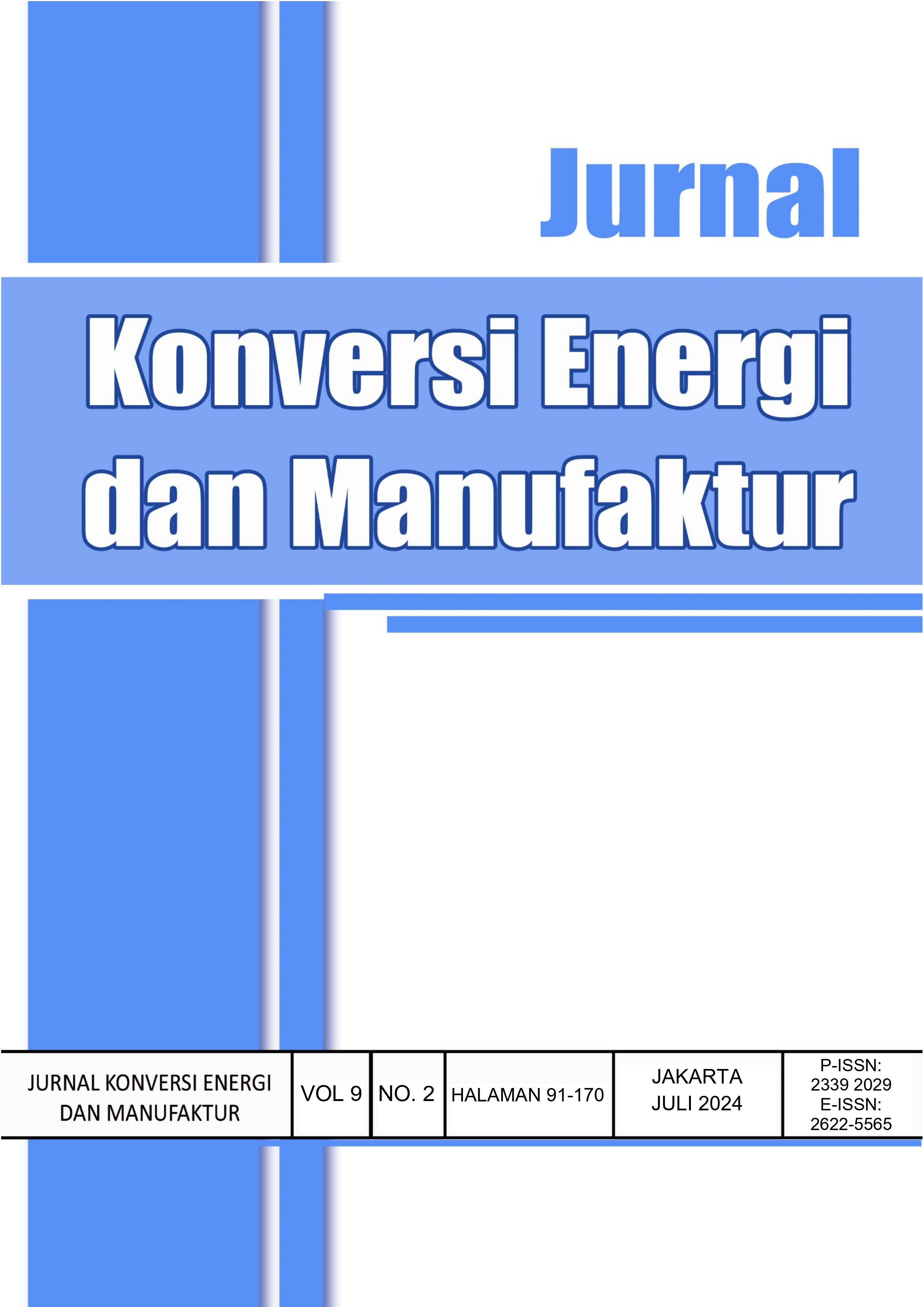PERHITUNGAN BEBAN KERJA OPERATOR LINI PERAKITAN KOMPRESOR TIPE SVC93E20PBE UNIT REFRIGERATOR R600A DI PT. PANASONIC MANUFACTURING INDONESIA
Optimizing Operator Workload for SVC93E20PBE Compressor Type Assembly Line in Refrigerator Unit R600A at PT. Panasonic Manufacturing Indonesia
DOI:
https://doi.org/10.21009/JKEM.9.2.3Keywords:
Productive Time, Workload Level, Assembly Operators, Work SamplingAbstract
Panasonic Manufacturing Indonesia produces electronic equipment especially for the needs of ordinary consumers, business and industry such as refrigerators, ACs, water pumps, fans, washing machines and audio with problems with refrigerator and AC production units. The research was carried out on the SVC93E20PBE type compressor assembly line for the R600A refrigerator unit with the problem of operator workload being too high, above 100%. The research was conducted for 30 days on three compressor assembly line operators using the workload analysis method, with the aim of obtaining the productive percentage and workload level of operators on the SVC93E20PBE type compressor assembly line for the R600A refrigerator unit. Data was taken following a standard work sampling observation sheet, containing employee activities while working or unemployed with adjustments. The results of workload measurement using the workload analysis method showed that operator 1's workload was 133.63%, operator 2's workload was 133.62%, and operator 3's workload was 133.74%. Based on the description of the workload results for compressor assembly operators for the SVC93E20PBE type 600A refrigerator unit, the researcher proposes the addition of two operators to the compressor assembly line, a total of five operators with a workload for each operator of 80.198%.
References
[2] S. Nugroho, S. Djoko, and H. Nuha, “Analisa Beban Kerja dalam Penentuan Jumlah Tenaga Kerja Optimal pada Departemen Packing (Studi Kasus PT Arjuna Utama Kimia Surabaya),” Universitas 17 Agustus 1945 Surabaya, 2015.
[3] T. Widodo, I. Fardiansyah, and T. Wiharta, “Analisis Beban Kerja untuk Mengetahui Jumlah Pekerja Optimal Karyawan Polishing 3 dengan Menggunakan Metode Workload Analysis Di PT Surya Toto Indonesia, Tbk,” J. Ind. Manuf., vol. 5, no. 2, p. 45, 2020, doi: 10.31000/jim.v5i2.3042.
[4] F. Ariani, K. Siregar, and Tugiman, “Determination of Total Labor Plant 1 using Workload Analysis (WLA) Method in Compound Fertilizer’s Industry,” IOP Conf. Ser. Mater. Sci. Eng., vol. 648, no. 1, 2019, doi: 10.1088/1757-899X/648/1/012015.
[5] A. Medikano and D. Apriani, “Analisis Beban Kerja Mental Karyawan Produksi Teh Hijau di PT Candi Loka,” UG J., vol. 17, no. 3, 2023.
[6] B. N. Yanto, “Ergonomi Dasar-Dasar Studi Waktu dan Gerakan untuk Analisis dan Perbaikan Sistem Kerja,” Yogyakarta Andy, 2017.
[7] C. Meisya, N. F. Fajriah, and S. Sari, “Workload Analysis to Optimize Labor of Tofu Factory X with Work Load Analysis and Workforce Analysis Methods,” J. Ind. Eng. Manag., vol. 7, no. 2, pp. 101–107, 2022, doi: 10.33536/jiem.v7i2.941.
[8] S. Wignjosoebroto, “Ergonomi Studi Gerak dan Waktu: Teknik Analisis untuk Peningkatan Produktivitas Kerja,” Surabaya Guna Widya, pp. 117–169, 2000.
[9] D. Darsini, A. Maulana, and B. Wibowo, “Analisis Jumlah Tenaga Kerja Optimal dengan Metode Work Load Analysis (WLA) di PT. RSI,” J. Appl. Mech. Eng. Renew. Energy, vol. 1, no. 1, pp. 24–29, 2021, doi: 10.52158/jamere.v1i1.96.
[10] V. Rousallen, E. Kurnia, A. Pakpahan, and S. Sarim, “Analisis Beban Kerja Pegawai di Area Packaging PT. Pudak Scientific,” J. Telemat. 0, pp. 37–43, 2018.
[11] M. Hidayat, D. Mulyati, and C. Amni, “Analisa Beban Kerja Menggunakan Metode Work Load Analysis pada Bengkel Sepeda Motor Zul di Ajun, Aceh Besar,” Karya Ilm. Fak. Tek., vol. 2, no. 2, 2022.






















